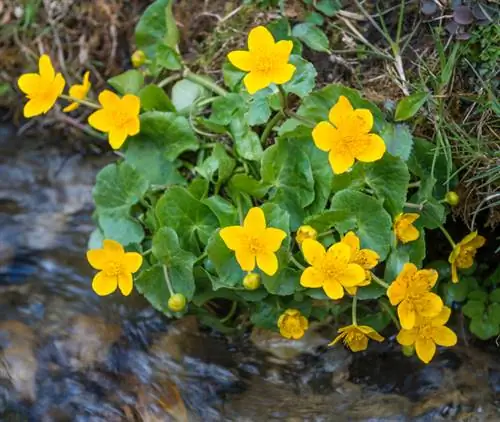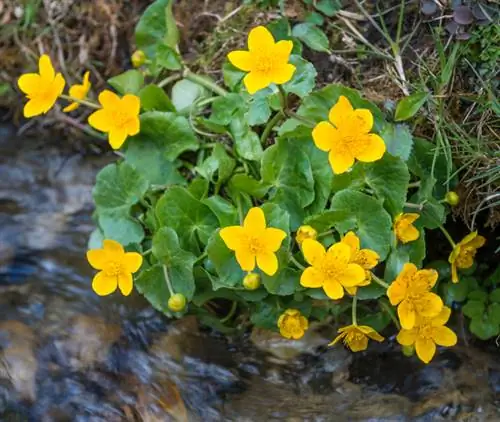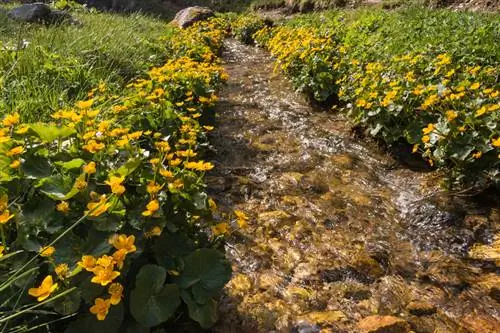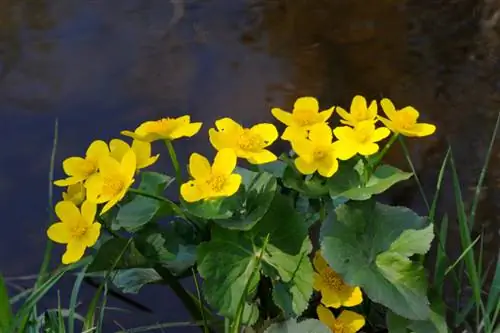- Author admin [email protected].
- Public 2023-12-16 16:46.
- Last modified 2025-01-23 11:20.
The marsh marigold comes in different varieties. The best-known species is the yellow-flowering C altha palustris, its Latin name, which is native to Europe. A white-flowered subspecies comes from the Himalayas. There are also various breeds.

What are the properties of marsh marigold?
The marsh marigold (C altha palustris) is an easy-care, slightly poisonous aquatic plant with mostly yellow or white flowers. Their ideal location is in moist, nutrient-rich soil and slightly sunny to partially shaded, preferably in shallow water 10 - 20 cm deep.
The types of marsh marigold
Both the wild forms and some cultivars are known under the name C altha palustris. Other species include the yellow-flowering C altha polypetata and the white-flowering C altha natans. It is slightly smaller than the other species and is ideal for planting in mini ponds, where it is wet but not flooded. The main flowering time for all varieties is in spring.
Planting the marsh marigold
Most varieties of marsh marigold like a location in shallow water with a water depth of 10 - 20 cm in light sun or partial shade. The ideal water height varies depending on the variety, as does the ideal lime content of the soil.
Planting in a basket is particularly recommended if larger fish, such as koi, are kept in the pond. If you weigh down the basket with a few stones, the fish cannot cause any damage to your plants while looking for food. Plant baskets also make it easier for you to clean or redesign your garden pond.
Caring for the marsh marigold
The marsh marigold is quite easy to care for. If you have chosen the right location, then you don't have to worry much about this plant. It also thrives in beds as long as the soil is humus and moist enough. Here, however, the marsh marigold needs to be watered abundantly and regularly. Horn shavings (€32.00 on Amazon) or bone meal are suitable as fertilizer.
Use the marsh marigold as a medicinal plant
The marsh marigold is slightly poisonous. In the Middle Ages it was used for liver and gallbladder problems due to its bright yellow color, but also for coughs and rheumatism. The poisonous anemonin is said to be lost through drying. In homeopathy, C altha palustris is used, for example, for menstrual problems, bronchitis and inflammatory skin diseases.
The most important things in brief:
- slightly toxic
- easy care
- Location: slightly sunny to partially shaded
- Soil: moist and nutrient-rich
- Flower color: mostly yellow, but also white
Tip
If you like the unusual, then plant the white-flowering C altha natans as an eye-catcher on your garden pond.






